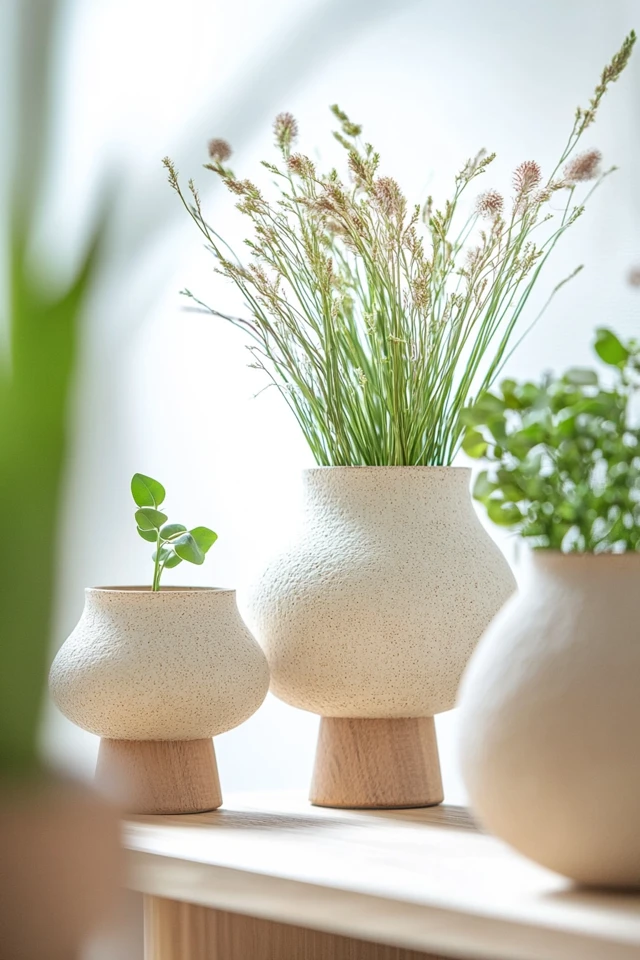Scandinavian interiors are all about creating a harmonious, cozy, and inviting space. By incorporating houseplants into your Nordic design, you can breathe life into your home while adding texture, color, and a connection to nature. Houseplants are not just an accessory in Scandinavian interiors—they’re an essential part of the hygge lifestyle, offering tranquility and a sense of balance.
I’ll never forget the first time I added plants to my own Scandinavian-inspired living room. Initially, I worried that my notorious “brown thumb” would clash with my love for greenery. But once I discovered hardy, low-maintenance plants like pothos and snake plants, everything changed. Now, houseplants are a central feature in my home, perfectly complementing the clean lines, neutral colors, and natural materials of my Nordic design.
Whether you’re an experienced plant parent or just starting your green journey, here are the best ways to use houseplants to enhance your Scandinavian interiors.
Why Houseplants Are a Key Element in Scandinavian Design
- Biophilic Connection: Plants bring the outdoors in, creating a calming and natural atmosphere.
- Contrasting Textures: The soft, organic forms of plants add contrast to the sleek, clean lines of Scandinavian furniture.
- Air Purification: Many houseplants improve air quality, making your space healthier and more relaxing.
- Visual Warmth: Greenery breaks up neutral color palettes and adds warmth to minimalist spaces.
1. Choose the Right Plants for Your Space
Why It’s Important:
Not all plants thrive in all environments. Selecting the right plants ensures they’ll flourish in your home.
How to Implement:
- For low-light areas, opt for plants like snake plants, pothos, or ZZ plants.
- If your space gets ample natural light, consider fiddle leaf figs, rubber plants, or succulents.
- Use small plants like aloe vera or peperomia for desks and shelves, and large plants like monstera or palms for statement pieces.
Pro Tip: Assess your space’s lighting and humidity levels before choosing your plants.
2. Keep It Minimal
Why It’s Important:
Scandinavian design values simplicity and clean aesthetics, so avoid overloading your space with too many plants.
How to Implement:
- Stick to a curated selection of plants that complement your decor.
- Arrange plants in odd-numbered groups for a natural and balanced look.
- Use a single statement plant in smaller rooms to avoid clutter.
Pro Tip: Leave plenty of negative space around your plants to maintain a minimalist vibe.
3. Opt for Neutral or Natural Pots
Why It Works:
Scandinavian design emphasizes muted tones and natural materials, so your pots should blend seamlessly into the space.
How to Implement:
- Choose pots in neutral colors like white, beige, or gray.
- Use natural materials like terracotta, ceramic, or wicker.
- Avoid overly bright or decorative pots that distract from the minimalist aesthetic.
Pro Tip: Mix textures with your pots—combine matte ceramics with raw terracotta for subtle variety.
4. Incorporate Hanging Plants
Why It’s a Great Idea:
Hanging plants save floor space and create visual interest by drawing the eye upward.
How to Implement:
- Use macrame hangers or simple metal hooks to hang trailing plants like pothos or string of pearls.
- Install a tension rod near a window for a clean and functional hanging setup.
- Layer plants at different heights for depth and dimension.
Pro Tip: Hanging plants work especially well in corners or above furniture like sofas or beds.
5. Create a Statement Corner
Why It Works:
A plant-filled corner can serve as a focal point in your Scandinavian space.
How to Implement:
- Place a large plant like a fiddle leaf fig or monstera in a basket or wooden planter.
- Layer smaller plants on a nearby stool or plant stand.
- Add a cozy chair and a soft throw to turn the area into a hygge-inspired nook.
Pro Tip: Use varying heights and leaf shapes to add visual interest to the corner.
6. Style Plants on Shelves
Why It’s Perfect for Scandinavian Interiors:
Plants soften the sharp edges of shelves and add greenery to otherwise unused vertical space.
How to Implement:
- Place small plants like succulents or baby rubber plants on bookshelves.
- Pair plants with minimalist decor like books, candles, or ceramics.
- Use trailing plants like ivy to drape over the edges of shelves.
Pro Tip: Leave some shelves empty to maintain a clean and uncluttered look.
7. Use Plants to Frame Windows
Why It Enhances the Space:
Plants around windows create a natural frame, maximizing light and bringing the outdoors in.
How to Implement:
- Line the windowsill with small potted plants like herbs or succulents.
- Place taller plants on the floor next to the window for balance.
- Hang trailing plants in front of the window to add softness without blocking light.
Pro Tip: Use pots with saucers to protect your windowsill from water damage.
8. Combine Plants with Natural Materials
Why It’s a Must:
Pairing greenery with wood, wicker, or linen enhances the natural, organic feel of Scandinavian interiors.
How to Implement:
- Use wooden plant stands or trays to elevate smaller pots.
- Place plants in wicker baskets for a soft, textured look.
- Combine greenery with a linen table runner or wool throw for a cozy vignette.
Pro Tip: Match the tone of your plant stands or baskets to your furniture for a cohesive look.
9. Group Plants by Size and Shape
Why It Adds Harmony:
Grouping plants with different heights and leaf shapes creates a dynamic yet balanced arrangement.
How to Implement:
- Use tall plants like snake plants or palms as a backdrop.
- Add mid-sized plants like rubber trees for depth.
- Place small, leafy plants like peperomia or ferns at the front.
Pro Tip: Stick to a consistent color palette with your pots to unify the grouping.
10. Embrace Seasonal Greenery
Why It Keeps Things Fresh:
Rotating plants or adding seasonal touches keeps your space feeling vibrant and updated.
How to Implement:
- Add flowering plants like amaryllis in winter or lavender in summer.
- Use pine branches or holly as decor during the holidays.
- Incorporate fresh herbs in the kitchen for both decoration and cooking.
Pro Tip: Experiment with cut greenery in simple vases to switch things up without adding more potted plants.
Picture Gallery
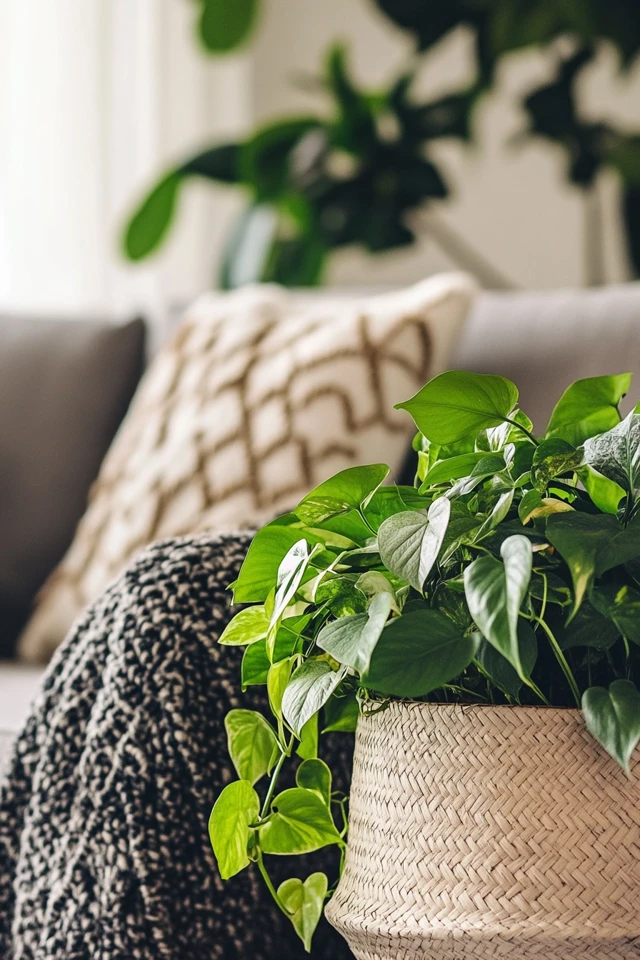
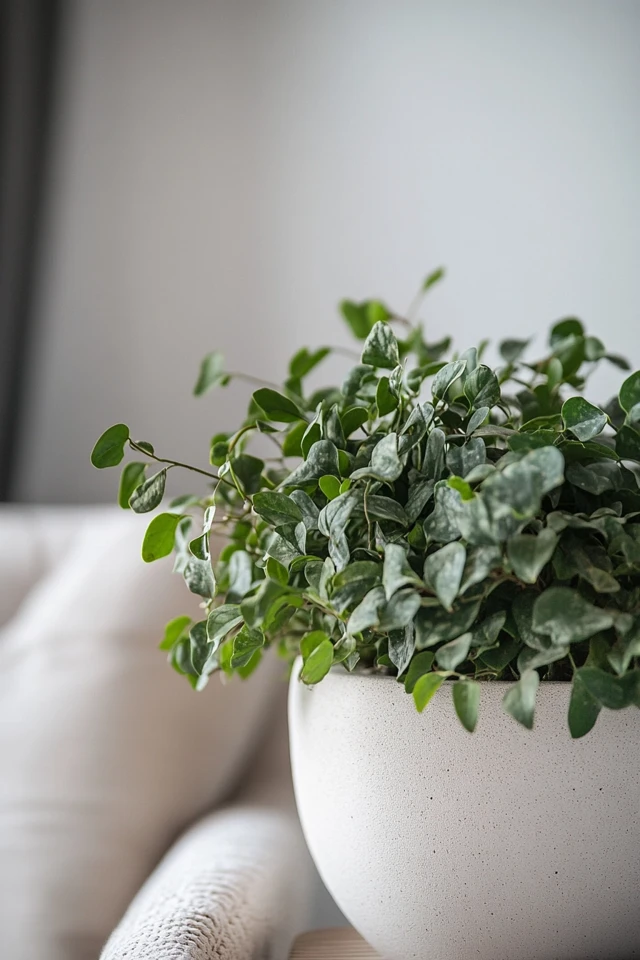
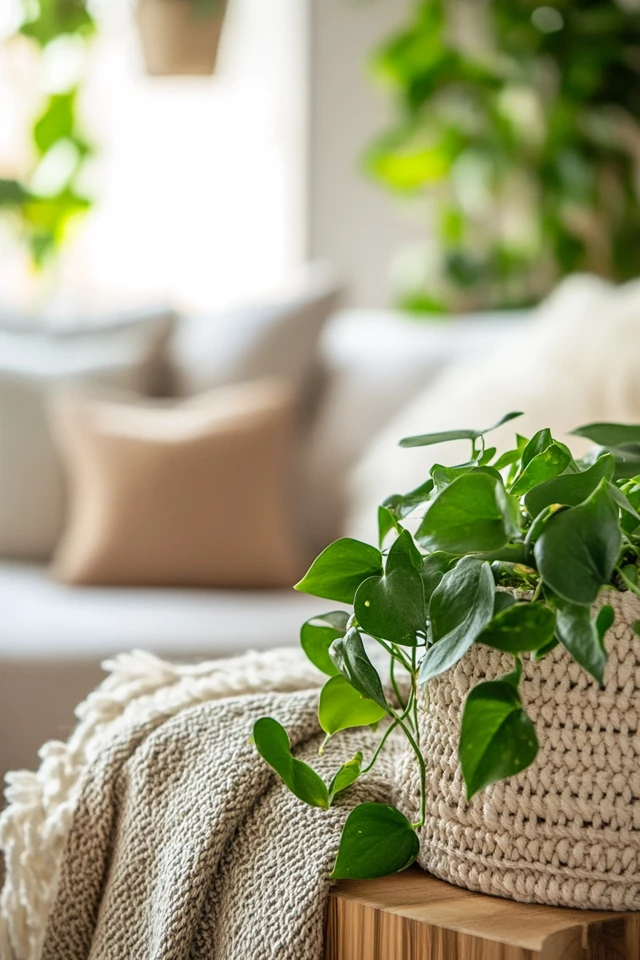
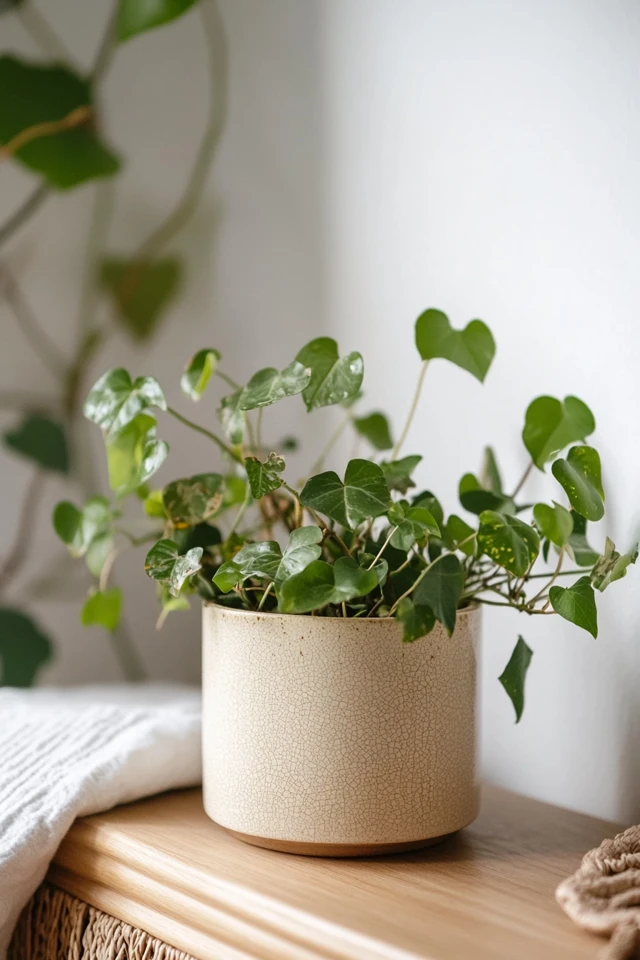
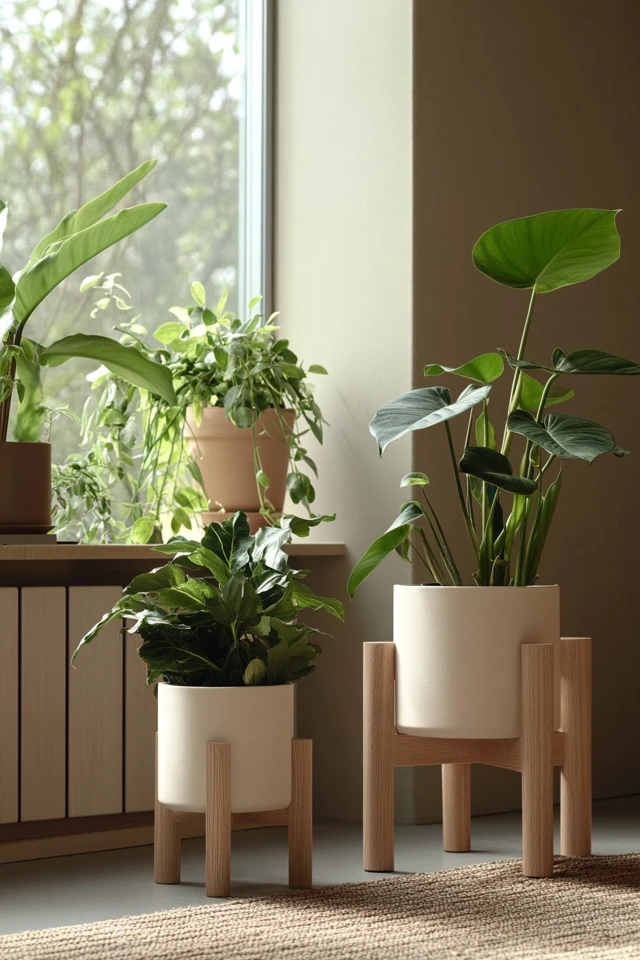
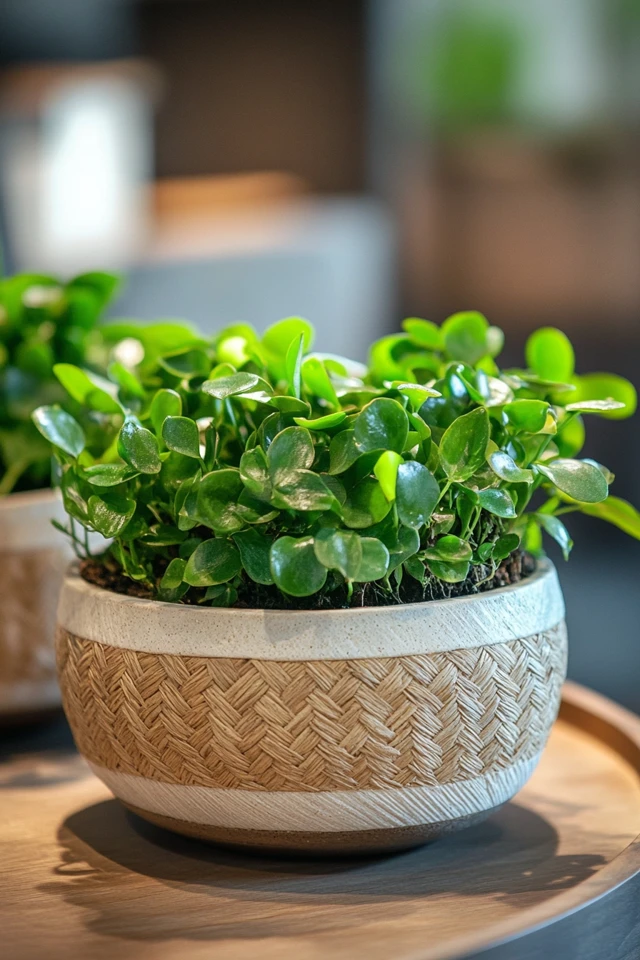
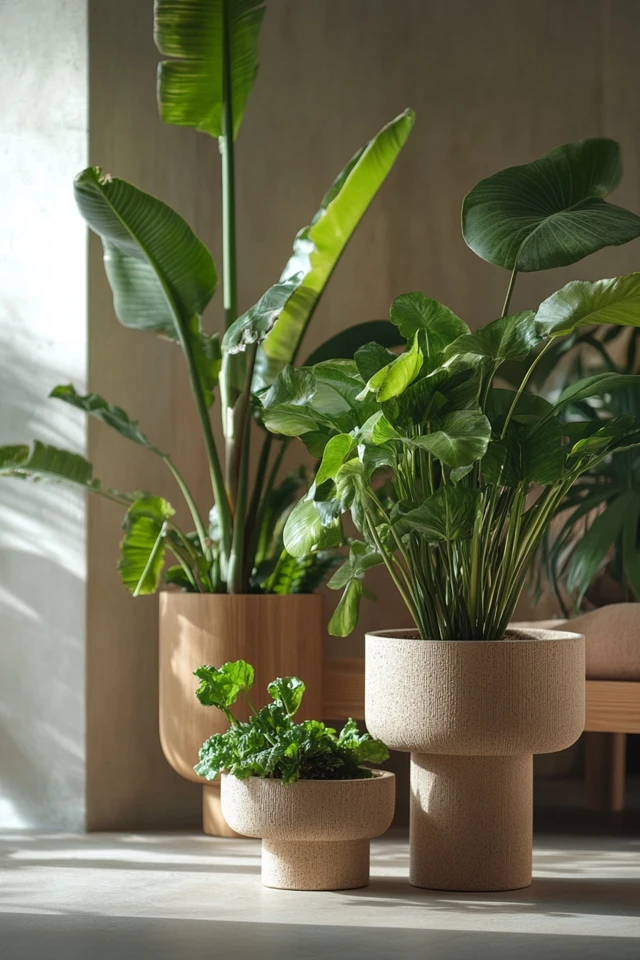
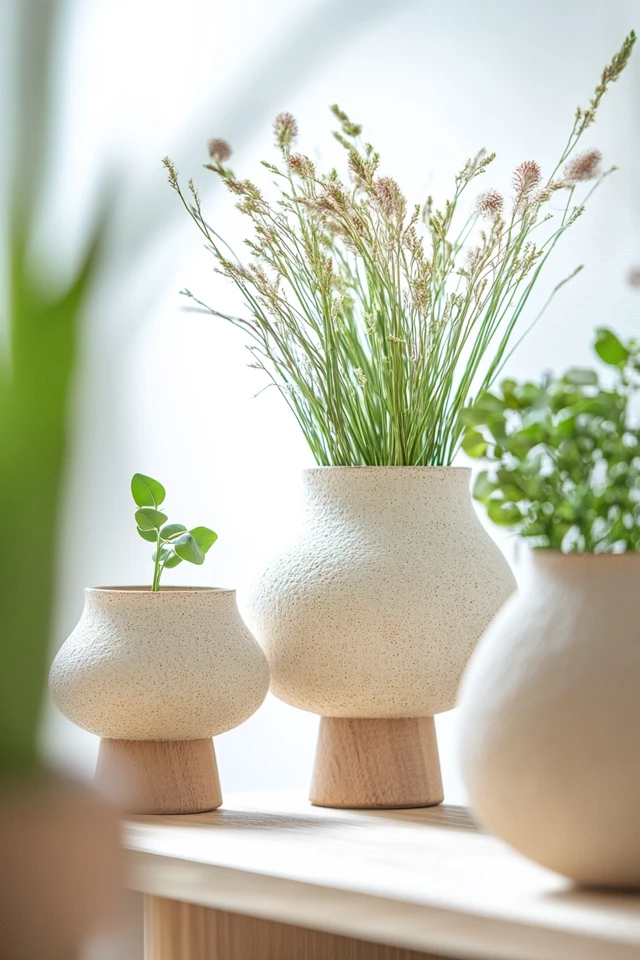
Conclusion
Houseplants are an essential element of Scandinavian interiors, adding warmth, life, and a natural touch to your space. Whether you’re working with a few small pots or creating a lush, plant-filled corner, incorporating greenery into your design can instantly elevate your home.
From hanging plants to statement corners, every placement serves to enhance the cozy and minimalist charm of Nordic style. With the right plants and styling tips, you can create a space that’s not only beautiful but also calming and restorative.
FAQs
1. What are the best houseplants for Scandinavian interiors?
Fiddle leaf figs, rubber plants, monstera, snake plants, and pothos are all great choices for a Scandinavian aesthetic.
2. Can I style Scandinavian interiors with artificial plants?
Yes, high-quality artificial plants can mimic the look of real greenery without the maintenance, but real plants add freshness and purify the air.
3. How do I style houseplants without cluttering the space?
Stick to a few well-chosen plants, use natural pots, and arrange them in odd-numbered groups to maintain a minimalist look.
4. How can I keep my houseplants alive in low-light Scandinavian winters?
Choose low-light plants like snake plants or pothos, and consider using grow lights to supplement natural sunlight.
5. What’s the best way to clean plant leaves?
Dust plant leaves regularly with a damp cloth to keep them looking fresh and to improve their ability to photosynthesize.

